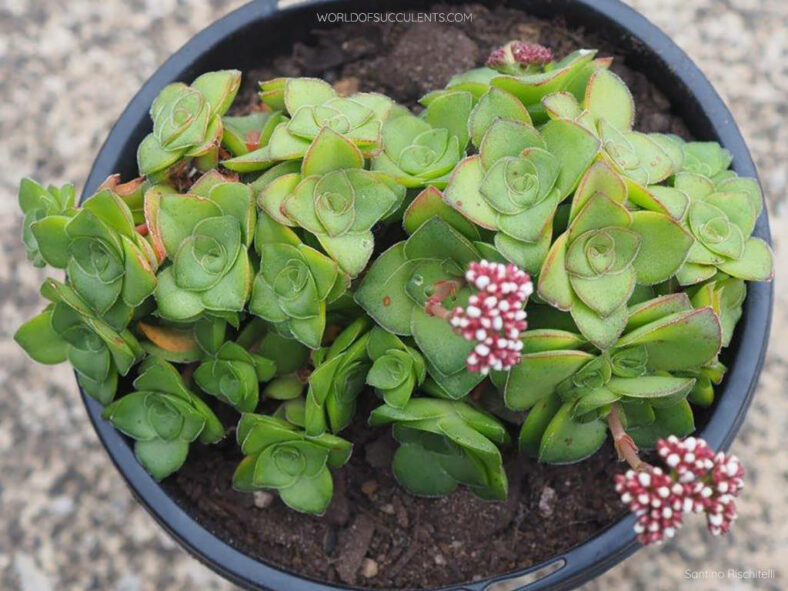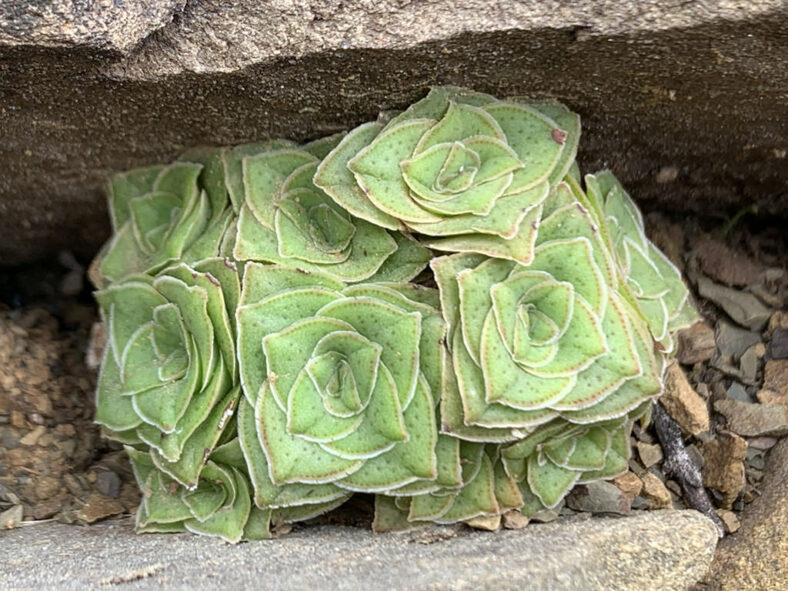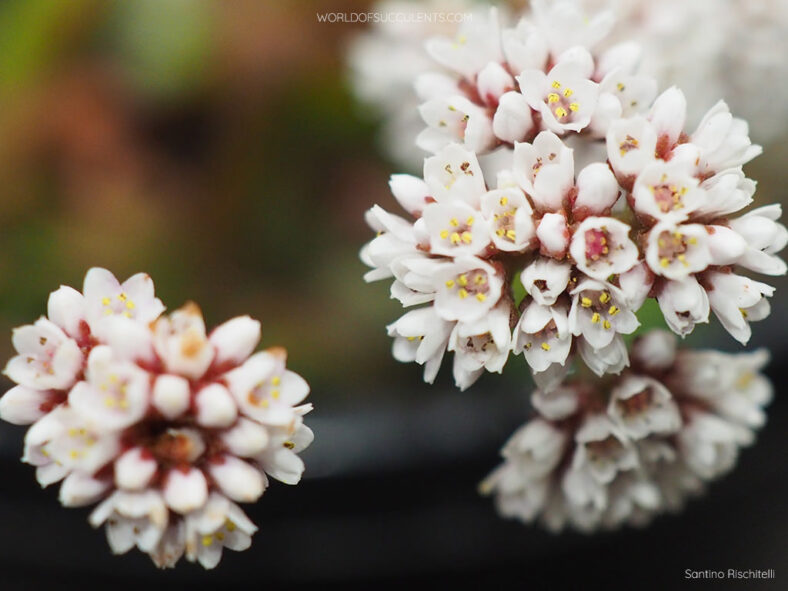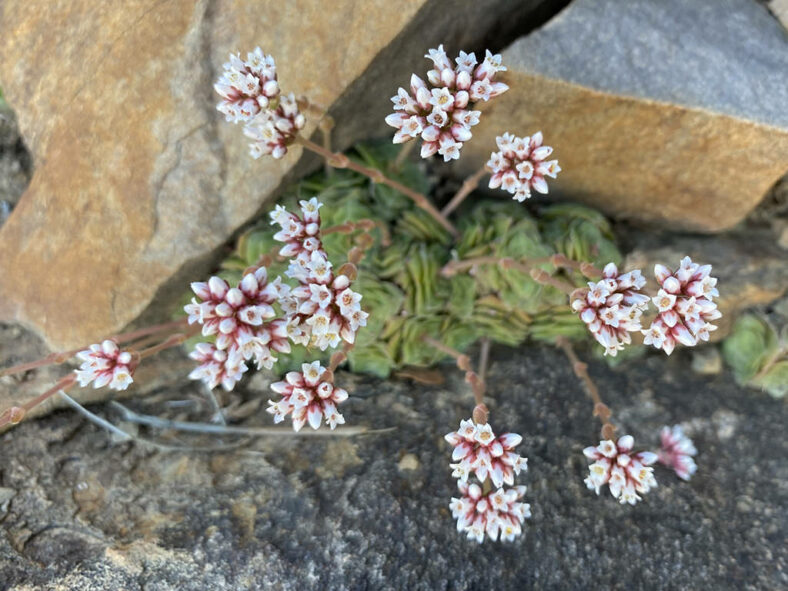Scientific Name
Crassula montana subsp. quadrangularis (Schönl.) Toelken
Synonym(s)
Crassula gillii, Crassula quadrangularis
Scientific Classification
Family: Crassulaceae
Subfamily: Crassuloideae
Genus: Crassula
Etymology
The subspecific epithet "quadrangularis (pronounced kwad-ran-gew-LAIR-iss)" means "having four sides, quadrangular" and refers to the shape of the rosettes.
Origin
Crassula montana subsp. quadrangularis is native to South Africa. It occurs between Laingsburg and Beaufort West in the Western Cape and Uitenhage in the Eastern Cape province, often in dense mats in sheltered rock crevices or on the south-facing aspect of cliffs.
Description
Crassula montana subsp. quadrangularis is a small, low-growing succulent with leaves neatly arranged in pairs along the stem, each at right angles to the pair above or below, forming an almost flat square rosette. The rosettes can grow up to 1 inch (2.5 cm) wide, proliferating from the base and creating a dense mat over time. The leaves are obovate, speckled with dark green to reddish glands, and lined with fine cilia. They can measure up to 0.6 inches (1.5 cm) long and 0.5 inches (1.2 cm) wide.
The tiny flowers are tubular with white, basally fused petals and appear in flat-topped to rounded clusters on erect stalks in spring and summer. The flower stalks can grow up to 2 inches 95 cm) tall.

How to Grow and Care for Crassula montana subsp. quadrangularis
Light: C. montana subsp. quadrangularis prefers full sun to partial shade. However, intense afternoon sun on the hottest summer days can burn the leaves of the plant. Therefore, a place with morning sun and afternoon shade would be perfect. Indoors, place your plant in a window that receives at least 6 hours of direct sunlight.
Soil: This plant is not particular about soil pH but requires very porous soil with excellent drainage. You can use commercial potting soil mixes designated for succulents or mix your own.
Temperature: Like most Crassulas, this succulent will tolerate short-term freezing, but extremes of cold or heat will cause it to lose leaves and die. C. montana subsp. quadrangularis can withstand temperatures as low as 30 °F (-1.1 °C). USDA Plant Hardiness Zones 10a to 11b, 30 to 50 °F (-1.1 to 10 °C).
Watering: Avoid overwatering using the "soak and dry" method, in which the soil is soaked with water, slowly drained, and left to dry out before watering again. Reduce watering in winter. Potted plants require more frequent watering than those in the ground.
Fertilizing: C. montana subsp. quadrangularis does not need much feeding but will benefit from a small amount of organic fertilizer when it starts actively growing in mid-spring.
Repotting: Repot as needed, preferably in spring, at the beginning of active plant growth. Make sure the soil is dry before you begin repotting.
Propagation: This succulent is generally propagated by leaves or stem cuttings but can also be grown from seeds. The easiest way is to propagate C. montana subsp. quadrangularis from a single leaf, while using stem cuttings is the fastest way to get a decent-sized plant. These processes are most successful at the beginning of the growing season. Sow the seeds in the spring or summer.
Learn more at How to Grow and Care for Crassula.
Toxicity of Crassula montana subsp. quadrangularis
C. montana subsp. quadrangularis is nontoxic to people and pets.
Links
- Back to genus Crassula
- Succupedia: Browse succulents by Scientific Name, Common Name, Genus, Family, USDA Hardiness Zone, Origin, or cacti by Genus
Photo Gallery
Click on a photo to see a larger version.


